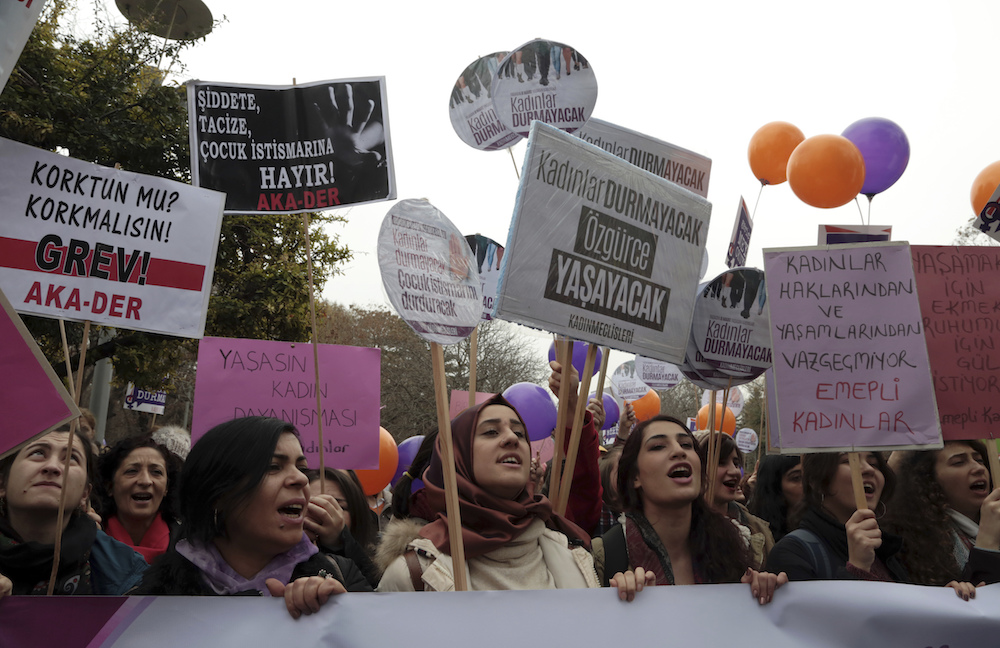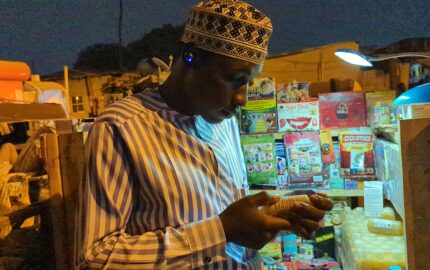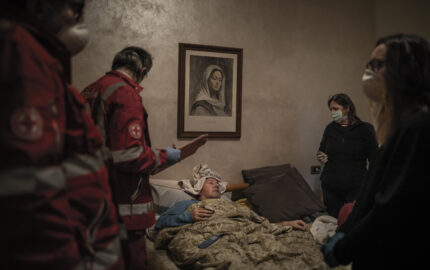In August, Emine Bulut, 38, met her ex-husband at a cafe in the central Anatolian city of Kırıkkale in Turkey. A fight broke out between the two, and the man stabbed her to death. Their 10-year-old daughter was also present at the scene. In a video shot by a bystander, Bulut is seen with her white shirt covered in blood. “I don’t want to die!” she screams. “Mom, please don’t die!” her daughter says. The video immediately sparked a national outcry, and hashtags #EmineBulut and #Ölmekİstemiyoruz (We Don’t Want to Die) trended on Turkish Twitter. The latter was a reference to Bulut’s final words in the video. Turkish women protested in various cities.
Bulut is one of the latest victims of male violence in Turkey. According to the platform We Will Stop Femicide, more than 350 women were killed this year. While 36 women lost their lives in October, the number was higher in previous months: 49 women died in August, and 53 in September. The perpetrators were mostly their husbands, former partners, or other family members. Deep-running patriarchal codes, cultural conservatism, and wide gender inequality cause women to be targets. Journalists have a critical responsibility to push for robust national debate to address the complexity of Turkey’s femicide crisis, yet they have enormous challenges to overcome.
Turkey’s news cycle has been overwhelming in recent years due to the economic and political turmoil that has gripped the country. Newsrooms followed snap elections, a bloody coup attempt, the country’s hasty transition to a presidential system, the civil war in neighboring Syria and the ensuing refugee crisis. As journalists get caught up chasing after the daily routine, it becomes harder to sustain focus on critical stories, and invest time and energy to run in-depth investigations to inform the public. The public discourse is largely molded by the dominant political forces, and strained media freedoms hurt the press’s ability and drive to probe complex social issues to play an effective watchdog role.
Related Reading
Domestic Violence Is
Not a ‘Crime of Passion’
Reporters increasingly are covering abuse by intimate partners as an urgent social crisis, not a private family matter
By Susan Stellin
Photographing Domestic Violence: Showing Uncomfortable Truths
Where is the line between respecting the needs of survivors or the deceased and the public’s need to know?
By Tara Pixley
Nieman Storyboard: From a
Caress of Love to a Fist of Fear
The New Yorker story “A Raised Hand,” by Rachel Louise Snyder, is the foundation of a new book on the scourge of domestic violence
By Ricki Morell
Domestic Violence in Chile: Calling Out Femicide
There is growing pressure on the media not to romanticize femicide as a “crime melodrama”
By Paula Molina
Domestic Violence in Kenya:
Showing Uncomfortable Truths
Much reporting tends to blame women for their own deaths while providing sympathetic coverage of alleged perpetrators
By Christine Mungai
Domestic Violence in China:
Educating the Public
A new law making domestic violence a civil infraction is increasing awareness of the abuse one in four married women have experienced
By Jieqi Luo
Yet, the challenges go beyond the country’s politics. When covering violence against women, Turkish media narratives focus on the disturbing details of the crimes and the possible emotional drama that played out at the backdrop. Insinuating the victim might have played a role in inviting violence is common, and violence is rarely framed as a problem of persistent gender inequality. This summer, a woman identified as Cansu E. was publicly abused by her husband, Erim E. The two were seeking a divorce and had been living separately. One news story detailed how the events unfolded, and highlighted that the beating took place after the man ran into Cansu E. at a nightclub. The wording evoked the image of an immoral woman by focusing on where the encounter occurred, and implied the man’s anger was justified. At least one reader seemed to have picked up on the message, and posted a comment to say a woman shouldn't go where her husband doesn't want her to. More than informing the public about gender stereotypes, the story served to perpetuate them.
Empathizing with the perpetrator is also a common tendency in Turkish news reports. Last year, Sila Gencoglu, a popular singer, sued her then-partner Ahmet Kural, a well-known actor, on grounds of physical violence. The case quickly gained national prominence: From the reported details of the abuse to their relationship history, news stories and debate shows focused intensely on the couple. Kural, who dismissed allegations of abuse as false, received criticism from his fans and Sila’s on social media. In an interview conducted after the incident, a journalist asked the actor how the events “affected his psychology” and presented him as a heartbroken man who had genuine feelings for Gencoglu. (The headline of the interview was a direct quote attributed to Kural, which read as “Sila’s Love Wasn’t True Love.”) Another story that was published after a Turkish court found the actor guilty in April featured how he spent time in “nature” to recover from the stress. Kural’s sentence was suspended. The actor and his lawyer had claimed the hearings didn’t proceed in a fair manner.
Competing for ratings or increased site traffic, Turkish television networks and internet platforms often gravitate toward sensationalist portrayals of violence. Steeped in a patriarchal culture, editors and reporters can be oblivious to their own biases, which shows in the discriminatory news language that permeates the media. National media associations publish research and recommendations to help journalists improve their practice. Following Bulut’s death, the Journalists Union of Turkey tweeted a message for media professionals “to do ethical journalism and not hunt for clicks in order for women who say #wedontwanttodie (#ölmekistemiyoruz) to really be heard.” A Turkish Journalists’ Association report about women and media called for “a focus on gender equality” and replacing “masculine, sexist language” with more inclusive language. While such contributions are valuable, it will take individual media professionals to do the work of internalizing gender equality and reflecting it in their work. A media guide by Filmmor women’s cooperative states that “in the absence of informed journalism” news outlets “significantly contribute” to femicide being treated as “ordinary,” and this could lead the public to perceive violence as “legitimate.”
Despite challenges, awareness about violence against women is growing fast in Turkey. As women get more educated and take charge of their own finances, they speak out more. Efforts by feminist organizations and social media campaigns continue to amplify the demand for change. AnitSayac.com, a digital platform, aims to keep the victims’ memory alive. Even Turkish rappers raise their voice in protest; “Susamam” (“I Can’t Remain Silent”), a song performed by several artists criticizing Turkey’s pressing social issues including violence against women, was released in September and has been viewed more than 37 million times online.
The government is also coming under pressure to act. In 2012, Turkey passed landmark legislation known as Law 6284 and ratified the Istanbul Convention, a Council of Europe document aiming to protect women. Despite being a signatory, Turkey hasn’t taken steps to implement the provisions. Tackling femicide and violence against women has a deeply-polarizing cultural dimension: While more progressive voices throw full support behind the legislation, hardline Islamists who are close to President Erdogan’s AK Party forcefully oppose it as they think it empowers women while weakening the family. The AK Party was in charge when the legislation was adopted, yet the president now seems to be treading carefully sensing unease in the conservative base. One can only hope that decision-makers can rise to the occasion and disentangle femicide from politics to save lives.
Days after Bulut’s gruesome murder, a woman named Selcan Yıldırım in the city of Adana appealed for help in a video post. She said her ex-husband also threatened to slit her throat. “In Turkey, you become news after you die,” she said. “I want to make it to the news before I die.” Her words are a reminder of the role media can play to amplify women’s call for justice. In Turkey, it’s much more than journalistic duty; it is a matter of life and death.



